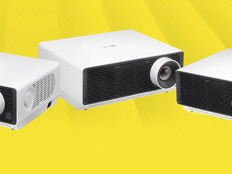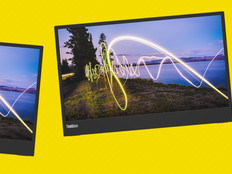7 Ways to Make PC Leasing Work to Your Best Advantage
When Robert Nelson’s company was hired in late 2009 to manage IT services for the small town of DeFuniak Springs, Fla., furnishing employees with the proper computing tools was job No. 1. The city’s 98 workers were saddled with PCs that were up to six years old, and many of the desktops were barely functioning.
“The PC situation had been piecemeal for years, and our plan was to get everything on a refresh cycle so nobody would ever have equipment that was more than three years old,” says Nelson, the city’s IT manager.
Coming up with the cash to finance the equipment was a major challenge, so Nelson decided to lease the hardware. The first round of Lenovo equipment — which included nine ThinkCentre M81 desktops, four ThinkCentre M91p desktops, one ThinkPad Edge E520 notebook, one ThinkPad T510 notebook, one ThinkServer RD240 Xeon E5507 and one Panasonic Toughbook 52 — was installed last summer.
$1,380 Monthly cost for leasing $50,000 worth of Lenovo PCs over three years
SOURCE: IBM Global Financing Leasing Calculator, for a Term Lease Master Agreement
To determine which of the city’s computers to refresh first, Nelson worked with a CDW•G representative to survey existing equipment and identify how it was being used. He then chose to replace those machines that would supply the most productivity gains. After Nelson selected the equipment, CDW•G acted as a liaison with Lenovo for the financing portion of the project.
The South Carolina Department of Parks, Recreation and Tourism has ample experience at leasing, having leased its first set of PCs back in 1998 for cash flow reasons as well as concerns about Y2K. Over the years, CIO David Elwart has found numerous benefits to leasing. In addition to helping apportion and regulate cash flow, the required non-appropriation clause came in handy recently when the agency laid off 38 employees. Because of the clause, the IT department didn’t have to continue paying for PCs it no longer needed.
Like DeFuniak Springs and the South Carolina Department of Parks, Recreation and Tourism, many state and local governments appreciate the benefits of leasing PCs. Besides helping organizations stretch their budgets, the arrangement improves lifecycle management, eases maintenance and gives workers access to current technology. There are ways to make PC leasing work to your best advantage. Here are some tips from public sector IT managers who have achieved successful leasing arrangements.
- Make sure you’re leasing the right equipment. It might be tempting to go with whatever the manufacturer tries to sell you, but it pays to choose carefully. “I did enough research to know that I wanted second-generation Intel processors in my PCs because the chip has amazing performance,” Nelson says. After his initial research, CDW•G helped him finalize the specifications before entering into the official contract.
- Try before you buy. If you’re still not sure what hardware is most appropriate for your organization, test drive it, recommends Jonathan Fales, senior managing director at The Alta Group, an equipment leasing and asset finance consultancy. “Some of the leasing companies — especially the larger ones — have “try and buy” programs where you can try the equipment out for two or three months,” he says. “If you like it, you can turn it into a lease at some point.”
-
Select features you expect to need in the future. The city of Rowlett, Texas, is currently leasing 260 computers. Michael Whipps, IT manager, turned to leasing to create a rotating stock of PCs that wouldn’t be more than three years old — the amount of time he expects to keep the machines.
“Look three years out when choosing things like processor capability, memory and drive space,” Whipps suggests.
“If you specify based on what you run right now, but there is a new operating system or Office suite that requires a lot more memory or storage space, you’re out of luck.”
Provisioning for future requirements will likely serve your organization’s computing needs for an extra year or two, should funding fall through, he notes.
- Don’t forget the soft costs. The South Carolina Department of Parks, Recreation and Tourism considered several factors before signing its most recent lease in 2010 for about 300 desktop PCs and 70 notebooks. “When we ran the numbers, we weighed a lot of variables — not only the actual cost of the PCs, but things like the amount of time a newer one took to boot versus an older PC, or how long our tech would have to drive to fix a broken PC at a state park,” Elwart says. “All of those things factor into the decision.”
-
Know how long you plan to keep the hardware. A three-year lease often makes the most sense. Because most hardware comes with a standard three-year warranty, longer leases can leave you vulnerable to equipment that will break or malfunction. That can put you in noncompliance with leases that require that you return equipment in functioning condition, Nelson points out.
However, if you plan to keep the equipment for four or five years, Fales recommends obtaining a full-payout lease at a low interest rate — one where you can buy the equipment for $1 at the end of the lease period.
-
Consider adding a next-day break/fix option to your contract. Because the city of Rowlett doesn’t have a large IT group, Whipps added an onsite next-day warranty to the leasing contract. “Our small IT staff can’t get to everything quickly,” he says.
In general, the warranty for leased equipment should be the same as for purchased equipment, and should be provided by the manufacturer. If a piece of leased equipment malfunctions while under warranty, the manufacturer will repair or replace it, just as it would for purchased equipment. With most technology leases, once the warranty expires, the user (lessee) is responsible.
- Evaluate end-of-life options. Although it often makes sense to return PCs at the end of a leasing period, that’s not always the case. “There are times when we decide to keep them,” Elwart says. For example, South Carolina state parks use a centralized reservation system, and older PCs work fine for that purpose, so Elwart chose to buy them at the end of the lease. “They are perfect because the system doesn’t require anything but a web browser,” he says.







